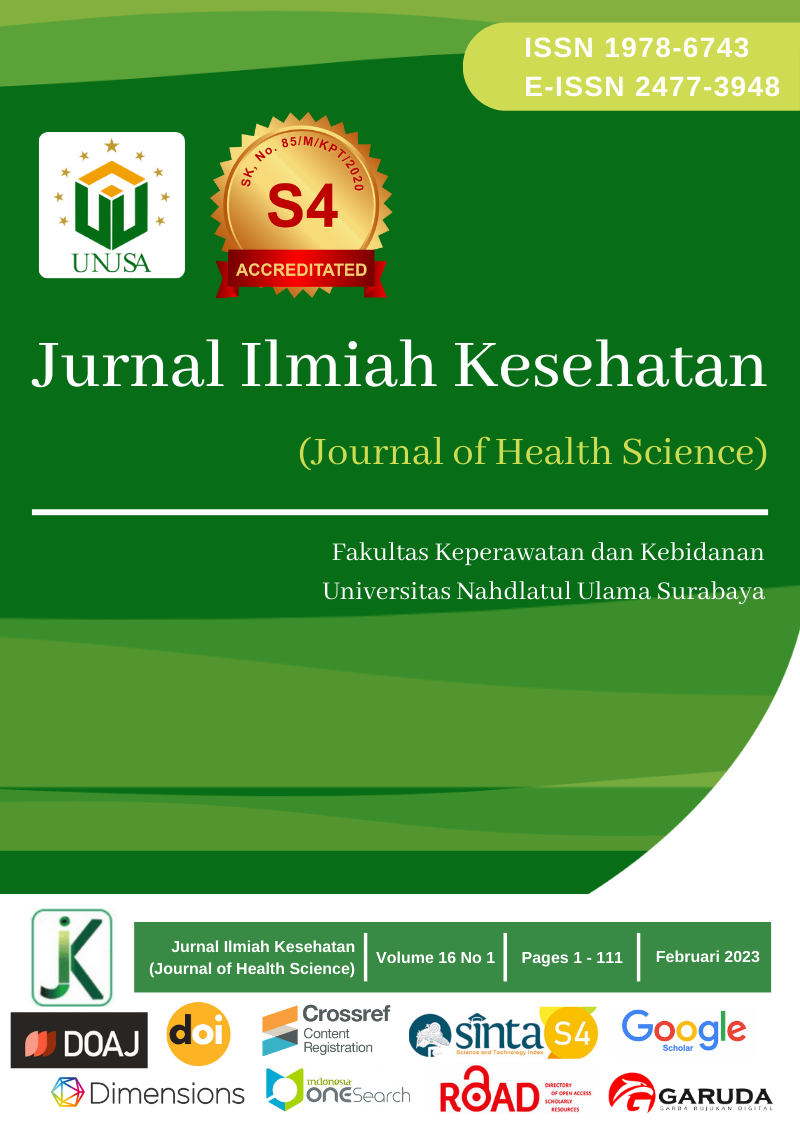Quality Analysis Reviewed from Organoleptic Properties, Water Content and Reducing Sugar Content of Pure Honey (Apis dorsata) and Mixed Honey
Main Article Content
Abstract
Determination of honey quality standards in principle aims to protect consumers from honey products that do not meet the requirements and protect good honey products from counterfeiting. The purpose of this study was to analyze differences in quality in terms of organoleptic properties, water content, and reducing sugar content in pure honey and mixed honey. This research uses a true experimental design conducted at the Chemistry Laboratory of the Health Polytechnic of Mataram, while the sampling was carried out in Lantung, Sumbawa Besar, Indonesia. The research was conducted from January to May 2022. Samples were taken purposively based on the characteristics of each honey. Data analysis used independent T-Test with 95% confidence level (p = 0.05). Based on the results of organoleptic tests that there are differences between the color, taste, and viscosity of pure honey and mixed honey. Furthermore, the water content in pure honey with an average of 19.01% and 20.83% in mixed honey, this indicates that when mixing honey uses a lot of water as a mixture. Based on the results of the Independent Sample T-Test, it was seen that there was a difference between the water content and reduced sugar content in both pure honey and mixed honey with a P-value = 0.00 < 0.05, meaning that there was a significant difference. Thus, the organoleptic quality of pure honey, water content, and reduced sugar is much better and has met the standard for honey that is suitable for consumption compared to mixed honey.
Downloads
Article Details
Copyright (c) 2022 Musparlin Halid, Wulan Ratia Ratulangi

This work is licensed under a Creative Commons Attribution-ShareAlike 4.0 International License.
References
Chen, C. (2019). Relationship between water activity and moisture content in floral honey. Foods, 8(1). https://doi.org/10.3390/foods8010030
Cianciosi, D., Forbes-Hernández, T. Y., Afrin, S., Gasparrini, M., Reboredo-Rodriguez, P., Manna, P. P., Zhang, J., Lamas, L. B., Flórez, S. M., Toyos, P. A., Quiles, J. L., Giampieri, F., & Battino, M. (2018). Phenolic Compounds in Honey and Their Associated Health Benefits: A Review. Molecules 2018, Vol. 23, Page 2322, 23(9), 2322. https://doi.org/10.3390/MOLECULES23092322
Dzugan, M., Tomczyk, M., Sowa, P., & Grabek-Lejko, D. (2018). Antioxidant Activity as Biomarker of Honey Variety. Molecules 2018, Vol. 23, Page 2069, 23(8), 2069. https://doi.org/10.3390/MOLECULES23082069
Gordis, L. (2014). Epidemiology (5th ed.). Saunders Elsevier.
Groposila-Constantinescu, D., Gabriela, P., Visan, V.-L., Margarit, G. L., Radu-Cristian, T., & Barba, D. (2020). Comparative Study of the Quality of Traditional Honey and Industrial Honey. Scientific Bulletin. Series F. Biotechnologies, 24(1), 50–54.
Johnston, M., McBride, M., Dahiya, D., Owusu-Apenten, R., & Singh Nigam, P. (2018). Antibacterial activity of Manuka honey and its components: An overview. AIMS Microbiology, 4(4), 655–664. https://doi.org/10.3934/microbiol.2018.4.655
Kornienko, E., Zabolotnykh, M., & Yakushkin, I. (2020). Organoleptic , Physico-Chemical and Palynological Properties of Honey in the West Siberian Region of Russia. 393(Tfts 2019), 46–49.
Li, Z., Meng, Z., Haigh, A., Wang, P., & Gibson, A. (2021). Characterisation of water in honey using a microwave cylindrical cavity resonator sensor. Journal of Food Engineering, 292, 110373. https://doi.org/10.1016/J.JFOODENG.2020.110373
Majid, M., Fadzelly Abu Bakar, M., Mian, Z., Esa, F., & Kok Yeow, Y. (2019). Variations of physicochemical properties of stingless bee honey from different botanical origin in state of Johor, Malaysia. IOP Conference Series: Earth and Environmental Science, 269(1). https://doi.org/10.1088/1755-1315/269/1/012028
Nicewicz, A. W., Nicewicz, Ł., & Pawłowska, P. (2021). Antioxidant capacity of honey from the urban apiary: a comparison with honey from the rural apiary. Scientific Reports, 11(1), 1–8. https://doi.org/10.1038/s41598-021-89178-4
Nuraini, N., Hastuti, H., & Husnaeni, H. (2021). Physical Quality Characteristics of Pure and Impure Trigona Bee Honey. Chalaza Journal of Animal Husbandry, 6(1), 27–32. https://doi.org/10.31327/chalaza.v6i1.1558
Otmani, I., Abdennour, C., Dridi, A., Kahalerras, L., & Halima-Salem, A. (2019). Characteristics of the bitter and sweet honey from Algeria Mediterranean coast. Veterinary World, 12(4), 551–557. https://doi.org/10.14202/vetworld.2019.551-557
Palilati, S., Fahrullah, & Korompot, I. (2021). FOOD SCIENTIA Journal of Food Science and Technology EFEK MADU LEBAH HUTAN ( Apis dorsata Fabr .) BERBAGAI KONSENTRASI TERHADAP pH DAN UJI ORGANOLEPTIK SUSU ULTRA HIGH TEMPERATURE ( UHT ). 1(2), 142–152. https://doi.org/10.33830/fsj.v1i2.2181.2021
Prabowo, S., Prayitno, Y. A., & Yuliani. (2020). Chemical Profile and Observing Honey Adulteration Using Fourier Transform Infrared (FTIR) Spectroscopy and Multivariate Calibration. Journal of Food and Pharmaceutical Sciences, 8(1), 5. https://doi.org/10.22146/jfps.653
Prabowo, S., Yuliani, Prayitno, Y. A., Lestari, K., & Kusevara, A. (2019). Penentuan Karakteristik Fisiko-Kimia Beberapa Jenis Madu. Journal of Tropical Agrifood, 1(1), 66–73.
Rupilu, S. F., Pattiselanno, A. E., & Papilaya, E. C. (2022). Strategi pengembangan madu hutan di desa hiay kecamatan wetar kabupaten maluku barat daya. 10(1), 17–29.
Sahlan, M., Ridhowati, A., Hermansyah, H., Wijanarko, A., Rahmawati, O., & Pratami, D. K. (2019). Formulation of hard candy containes pure honey as functional food. AIP Conference Proceedings, 2092(1), 040010. https://doi.org/10.1063/1.5096743
Singh, I., & Singh, S. (2018). Honey moisture reduction and its quality. Journal of Food Science and Technology 2018 55:10, 55(10), 3861–3871. https://doi.org/10.1007/S13197-018-3341-5
Wulandari, D. D. (2017). Analisa Kualitas Madu (Keasaman, Kadar Air. Jurnal Kimia Riset, 2(1), 16.





